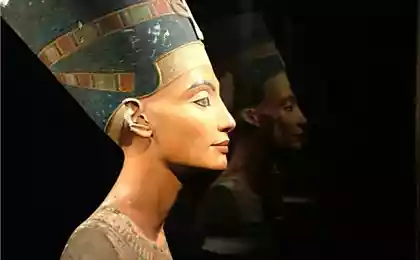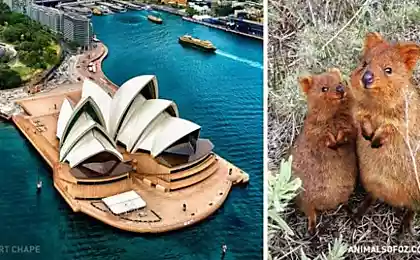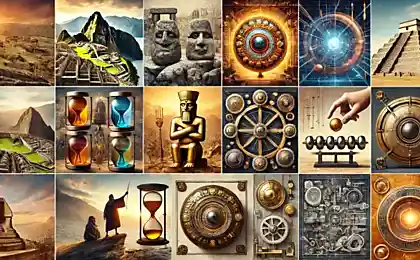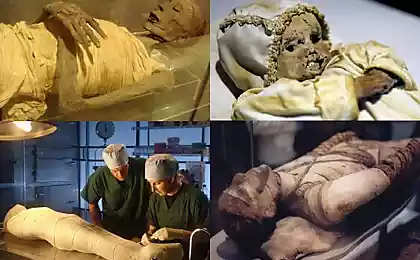268
The ancient Egyptians in Australia
Last week, the major Australian television abc took off with the release of a report about the discovery of new, previously unknown, Egyptian hieroglyphs in Gosford, Australia, near the national park Kariong.Material was also removed from their website but remained in the cache.
abc.net.au
forbiddenarchaeology.blogspot.com

Prehistory findings:
The National Park of New South Wales (Australia), 100 km north of Sydney (that is, on the Pacific coast!), There are petroglyphs. These mysterious petroglyphs for almost a hundred years was only part of the local folklore, born from the stories of eyewitnesses, only occasionally finds them. Petroglyphs are in the cleft of the rock in the form of a sort of "cracks" in width from two to four meters. This cleft thanks to the slope of rock, as if the covering on top of the narrow end "cracks", something like a cave. Shrub, densely growing at the entrance to the "cave", like hides herself and petroglyphs on the walls of her look casual traveler.
The very existence of characters would not be surprising if it were not ... ancient Egyptian hieroglyphics! ..
Both wall clefts thickly dotted with more than 250 characters. Almost erased hieroglyphs on the south wall, but in the north they are well preserved. Some of them are easily recognizable, and some - not. And they belong to the most archaic of all known forms of ancient Egyptian writing, which has many similarities with drevneshumerskoy written and are familiar with only a very limited number of Egyptologists, so even a version that these characters are modern forgery.

However, one of the oldest Egyptologist Ray Johnson, who took part in the translation of the most ancient texts from the collection of the Cairo Museum of History, was able to "Australian" lettering. As it turned out, on the walls of ancient Egyptian fixed Chronicle travelers shipwrecked "on a strange and hostile land," as well as information about the untimely death of their leader. As of writing, the head belonged to the royal family and was the son of Pharaoh Djedefre, who replaced the head of Egypt's well-known to us Khufu (Cheops), which is the official academic history attributes the construction of the Great Pyramid at Giza. Describe in detail how the very death of the leader of the snake venom, and his burial ritual.

Source:
abc.net.au
forbiddenarchaeology.blogspot.com

Prehistory findings:
The National Park of New South Wales (Australia), 100 km north of Sydney (that is, on the Pacific coast!), There are petroglyphs. These mysterious petroglyphs for almost a hundred years was only part of the local folklore, born from the stories of eyewitnesses, only occasionally finds them. Petroglyphs are in the cleft of the rock in the form of a sort of "cracks" in width from two to four meters. This cleft thanks to the slope of rock, as if the covering on top of the narrow end "cracks", something like a cave. Shrub, densely growing at the entrance to the "cave", like hides herself and petroglyphs on the walls of her look casual traveler.
The very existence of characters would not be surprising if it were not ... ancient Egyptian hieroglyphics! ..
Both wall clefts thickly dotted with more than 250 characters. Almost erased hieroglyphs on the south wall, but in the north they are well preserved. Some of them are easily recognizable, and some - not. And they belong to the most archaic of all known forms of ancient Egyptian writing, which has many similarities with drevneshumerskoy written and are familiar with only a very limited number of Egyptologists, so even a version that these characters are modern forgery.

However, one of the oldest Egyptologist Ray Johnson, who took part in the translation of the most ancient texts from the collection of the Cairo Museum of History, was able to "Australian" lettering. As it turned out, on the walls of ancient Egyptian fixed Chronicle travelers shipwrecked "on a strange and hostile land," as well as information about the untimely death of their leader. As of writing, the head belonged to the royal family and was the son of Pharaoh Djedefre, who replaced the head of Egypt's well-known to us Khufu (Cheops), which is the official academic history attributes the construction of the Great Pyramid at Giza. Describe in detail how the very death of the leader of the snake venom, and his burial ritual.

Source:
























